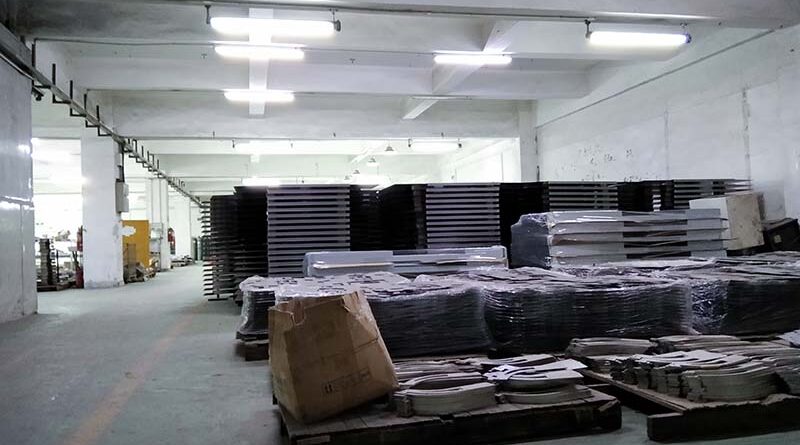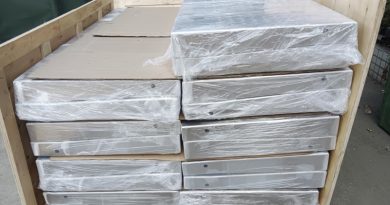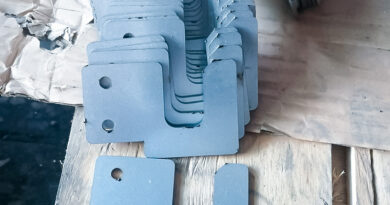What are the Main Application of Sheet Metal Parts?
There are many sheet metal materials that are suitable for stamping and processing, and those that are widely used in the electrical and electronics industry to custom metal boxes includes:
Ordinary cold-rolled sheet SPCC SPCC refers to the ingot through the cold rolling mill continuously rolled into the required thickness of steel coil or sheet, SPCC surface without any protection, exposed to the air is very easy to be oxidized, especially in a humid environment oxidation speed up, the appearance of dark red rust, in use when the surface to paint, electroplating or other protection.
Peal Galvanized Steel Sheet SECC The substrate of SECC is a general cold rolled steel coil, and after degreasing, pickling, plating and various post-treatment processes in a continuous galvanized production line, it becomes a galvanized product, SECC not only has the mechanical properties and similar processability of a general cold rolled steel sheet, but also has superior corrosion resistance and decorative appearance. It is a competitive and alternative product in the market of electronic products, home appliances and furniture. For example, SECC is commonly used in computer cases.
SGCC is a hot-dipped galvanized steel coil that is made by cleaning, annealing, and dipping into a molten zinc bath at a temperature of about 460°C. SGCC is harder than SECC, less ductile (to avoid deep draw designs), thicker in zinc, and less weldable.
Singled stainless steel SUS301 has a lower Cr (chromium) content than SUS304 and is less resistant to corrosion, but it is cold processed to obtain good tensile strength and hardness, and is more flexible.
Stainless steel SUS304 is one of the most widely used stainless steels. It is more resistant to corrosion and heat than steel containing Cr (chromium) because of its Ni (nickel) content, and has very good mechanical properties.

In general, the basic equipment of sheet metal process includes Shear Machine, CNC Punching Machine/Laser, Plasma, Water Jet Cutting Machine, Bending Machine, Drilling Machine and various auxiliary equipment such as Uncoiler, Levelling Machine, Deburring Machine, Spot Welder, etc. Usually, the four most important steps of the sheet metal process are cutting, punching/cutting/, bending/rolling, welding, and surface treatment. Sheet metal is sometimes also known as wrenching, which is a term derived from the English platemetal. Generally, some thin metal sheets are formed into the desired shape and size through plastic deformation by hand or die stamping, and can be further formed into more complex parts by welding or a small amount of mechanical processing, such as chimneys, tin stoves, and car shells commonly used in households are all sheet metal parts.
Sheet metal processing is called sheet metal processing. The main processes are shearing, bending and snapping, bending and forming, welding, riveting, etc., which require certain geometric knowledge. Sheet metal parts are thin sheet metal parts, that is, parts that can be processed by means of stamping, bending, stretching, etc. A general definition is that the thickness of the parts remains unchanged during processing. The corresponding parts are casting parts, forging parts, machining parts, etc. For example, the outside iron shell of a car is a sheet metal part, and some cabinetry made of stainless steel is also a sheet metal part. Modern sheet metal process includes: is filament power winding, laser cutting, heavy processing, metal bonding, metal drawing, plasma cutting, precision welding, roll forming, metal sheet bending forming, die forging, water jet cutting, precision welding, etc. Surface treatment of sheet metal parts is also a very important part of the sheet metal processing process because it has the function of preventing the parts from rusting, beautifying the appearance of the products, etc. The surface treatment of sheet metal parts is mainly to remove oil, oxidation, rust, etc. It prepares the surface for post-treatment, which is mainly spraying (baking) paint, spraying plastic and rust-proof layer, etc. Among 3D software, SolidWorks, UG, Pro/E, SolidEdge, TopSolid, CATIA, etc. all have sheet metal parts, mainly by editing 3D graphics. The main purpose is to get the data required for sheet metal parts processing by editing the 3D graphics (such as unfolding diagrams, bending lines, etc.) and to provide data for CNC Punching Machine/Laser, Plasma, Waterjet Cutting Machine/Combination Machine and CNC Bending Machine. Bending Machine), etc. to provide data. please click sheet metal supplier to learn more information if you want to custom aluminum box.




